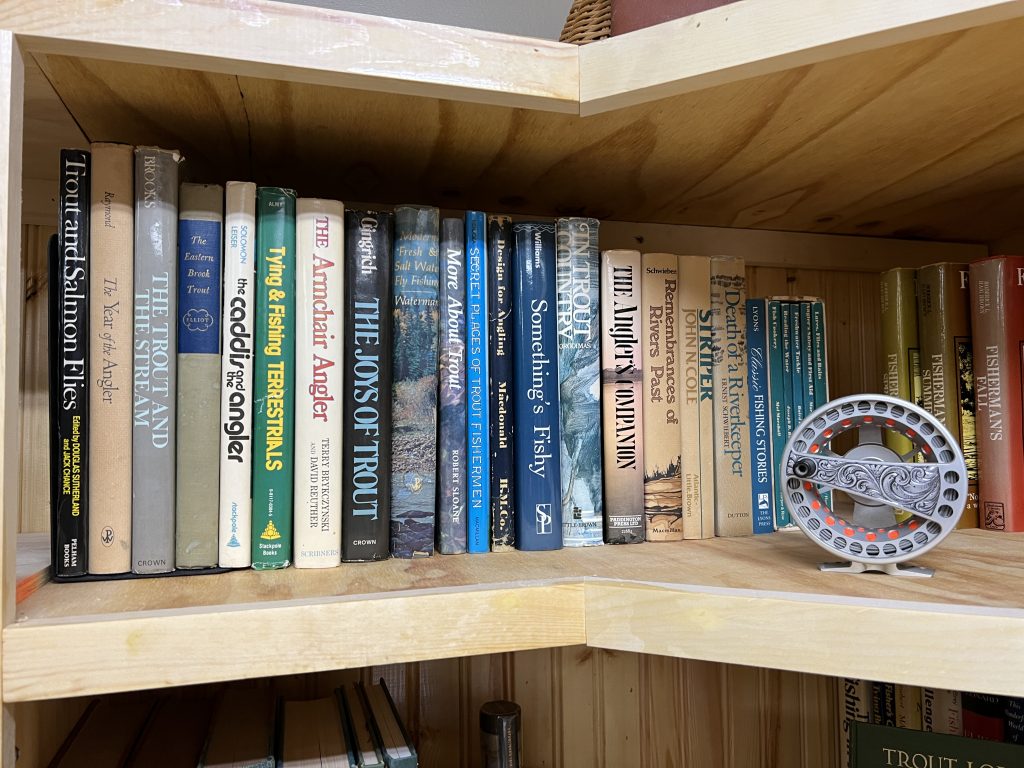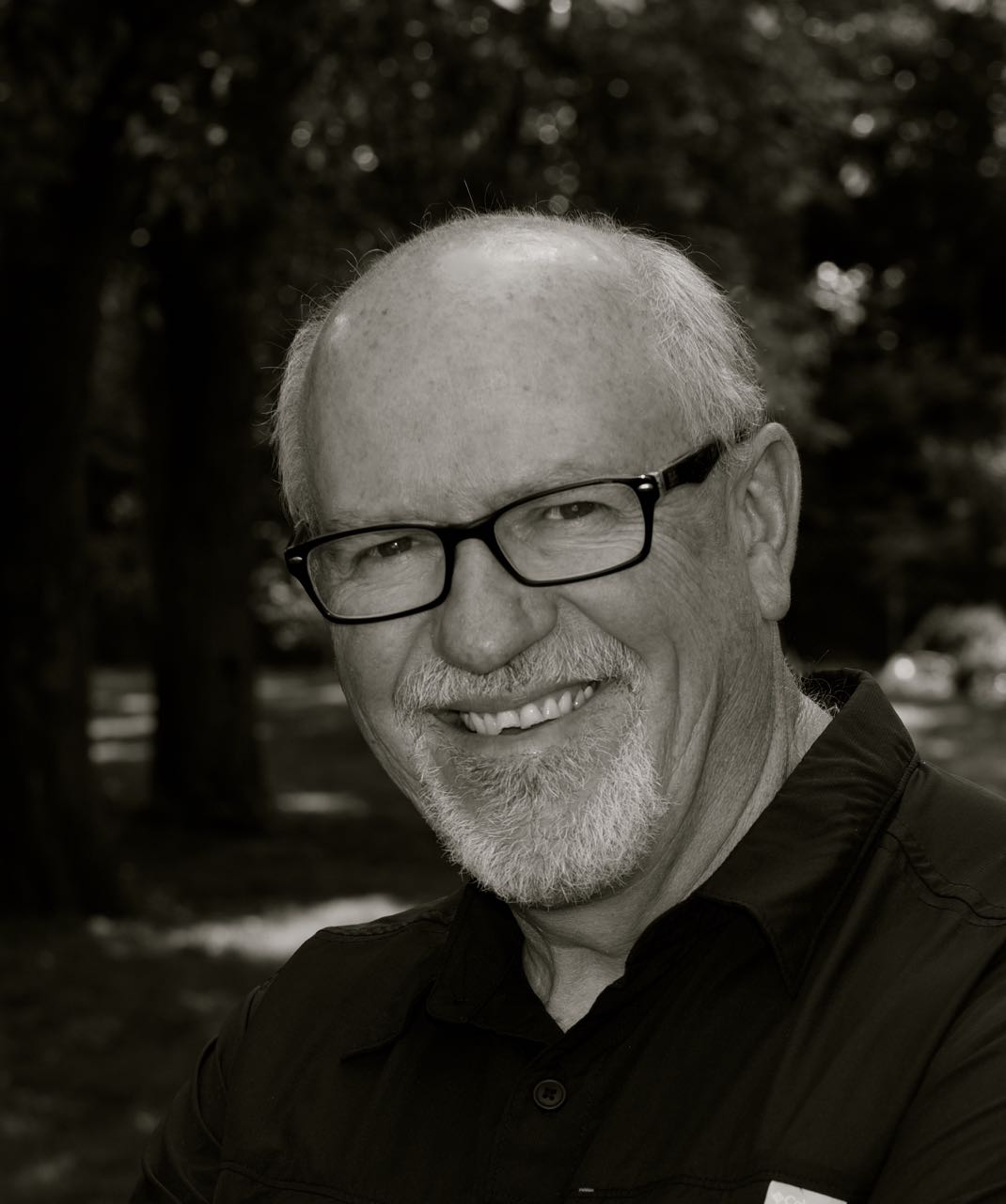Jim Brown grew up in San Diego, the son of an unassuming sailor and World War II veteran, Mike Brown. Mike was known as a man who could catch fish anywhere, at any time, and passed his love of the sport on to Jim. One favorite destination for them was Lake Sutherland. Over time, Jim morphed from fishing with his dad to helping out on the dock and, when he was 12-years-old, moved in with the family of the Sutherland Damkeeper.
While working at the lake, Brown carved out a room out at the Lake Sutherland store, which he shared with Pistol, a stray dog that wandered up to the lake and stayed. Pistol, on one occasion, killed a rattlesnake in mid-air that was lunging at Brown’s leg. “A fellow just kind of gets attached to a dog like that,” Brown said. “I shared my bed with him and his fleas.”
Local anglers affectionately referred to Jim as “The Lake Boy.” When he turned 13, he attended an Outdoor Careers Conference where students were asked to identify the most appealing career. When it was Jim’s turn, he rose, pointed at one presenter and said, “I want Orville Ball’s job.” Orville Ball was the Manager of the San Diego City Lakes Program.Jim’s work was highly regarded and at the age of 19, while going to college, was tapped to run the operation of Lower Otay. Less than a decade later, at the age of 27, he was named Manager of the San Diego City Lakes Program, fulfilling the proclamation he’d made 14 years earlier at that Outdoor Careers Conference.
Jim was a strong advocate for public use of the lakes by both sportsmen and recreational users. His lake management philosophy was, “you can not be all things to all people at the same time at the same place”.
Since the system consists of 10 lakes, he provided different activities at different lakes. For example, Upper Otay is small and wade-in or float-tube only so it often looks like a bowl of Cheerios. On San Vicente at certain times and in certain areas, you will find ski boats based on a concept of time-and-zone management he developed that provides opportunities for various users while minimizing conflicting uses.
For nearly 40 years, Jim oversaw the successful public use of the waters in the lakes. He was responsible for reopening one of the hidden jewels of the system, Barrett Lake, the only lake in the system that holds the northern strain of bass exclusively.
In the 1950s there were three guys fishing on Lake Henshaw and the subject of bass came up,” Brown said. “One guy was Ray Boone, a professional baseball player who wondered why the bass he caught in Florida during spring training were bigger than the ones he caught in the San Diego Lakes. The question was this: Is it the genetic nature of the Florida strain that allows it to grow larger than the San Diego area’s northern strain? Or is it the conditions of the environment they live in?”
Orville Ball, City Lakes manager at the time, was in the boat with Boone that day, and that conversation started a lengthy process to stock some of the San Diego Lakes with the Florida strain. The project began with Upper Otay in 1959, and it wasn’t long before Ball and Brown—and everyone else—understood that genetics were the chief influencer of size. Soon, Florida strain largemouths were introduced to the other lakes, except Barrett. To this day, Barrett only contains the northern strain, which is considered more aggressive and easier to catch than its Florida strain cousin.
That management philosophy has paid dividends—the International Game Fish Association credits five of the top seven fly-caught largemouth bass as having come from southern California lakes. Local anglers know who deserves most of the credit for that success.
Local fly-fisher Bruce Smith, said, “(Brown) is a reminder of how important it is to have people in positions who care about people as well as the natural resources. It seems like access to water is becoming more difficult, and the need for leaders like (Brown) is greater now than ever before.”
Brown is now retired but still gives an occasional tour of San Diego County, something I highly recommend. One of the stops on my tour was Lake Sutherland, the place Brown learned to work with people, lessons he utilized while managing 10 different lakes for nearly 40 years. Somewhere on the property are the bones of his old friend, Pistol. One can’t help but believe that the most important lessons he ever learned came from a stray dog that made Brown his home: the love of the outdoors and the virtue of loyalty.
Jim recently sent me this immense library of fly fishing books and, being handy with wood, I decided to build The Jim Brown Library and place a fly tying set up right in the middle of it. I am writing this article from that same area, surrounded the a treasure trove of fly fishing history from a legendary figure in San Diego. But the best part is that this huggable hero of mine considered me worthy enough to gift with his library, but most importantly, his friendship.












